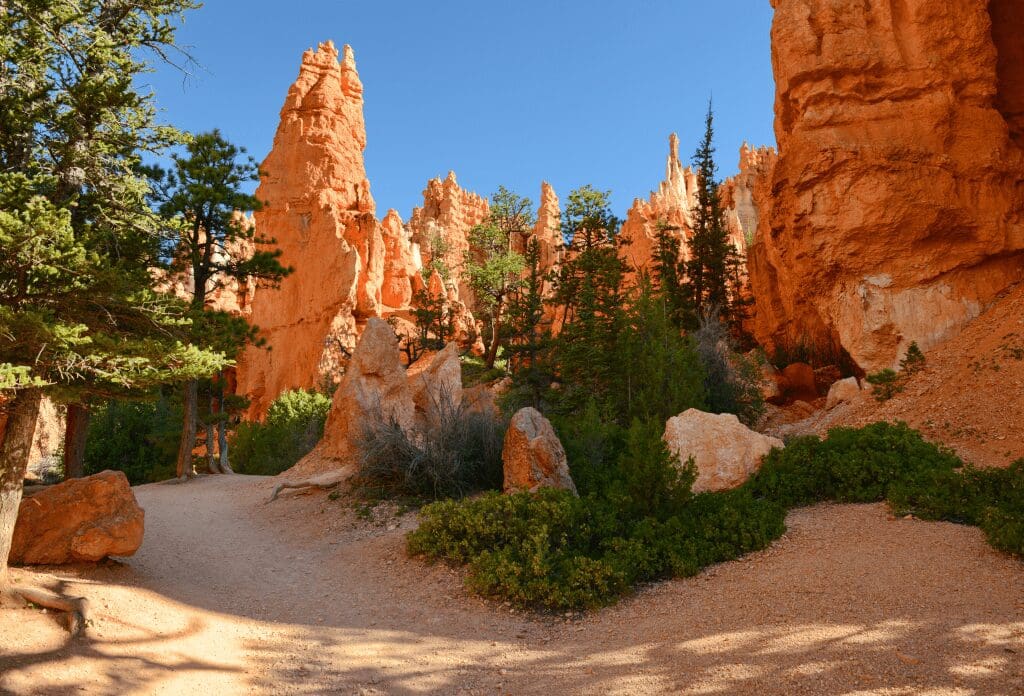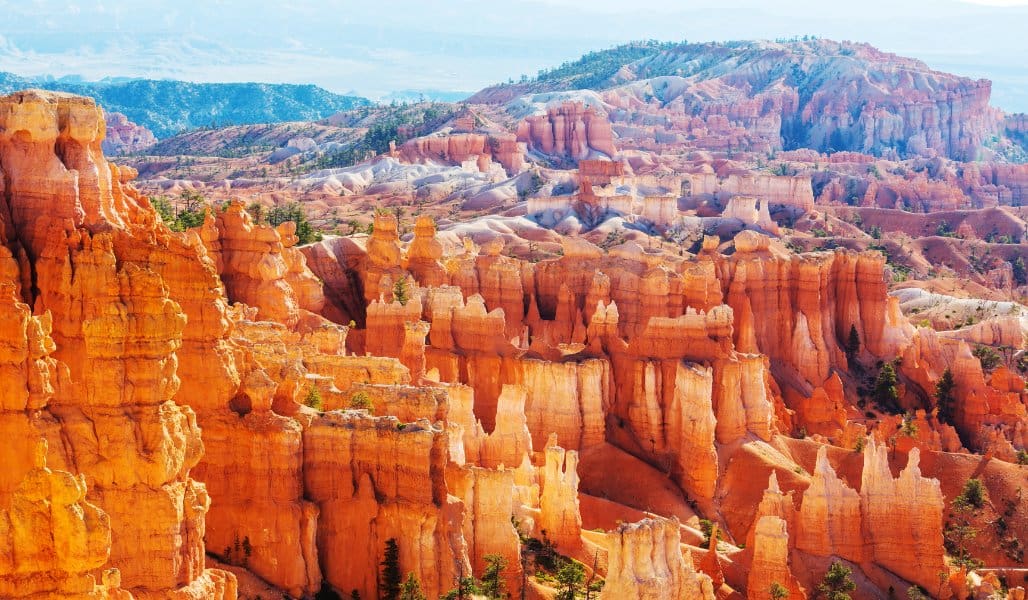
BRYCE CANYON
Utah
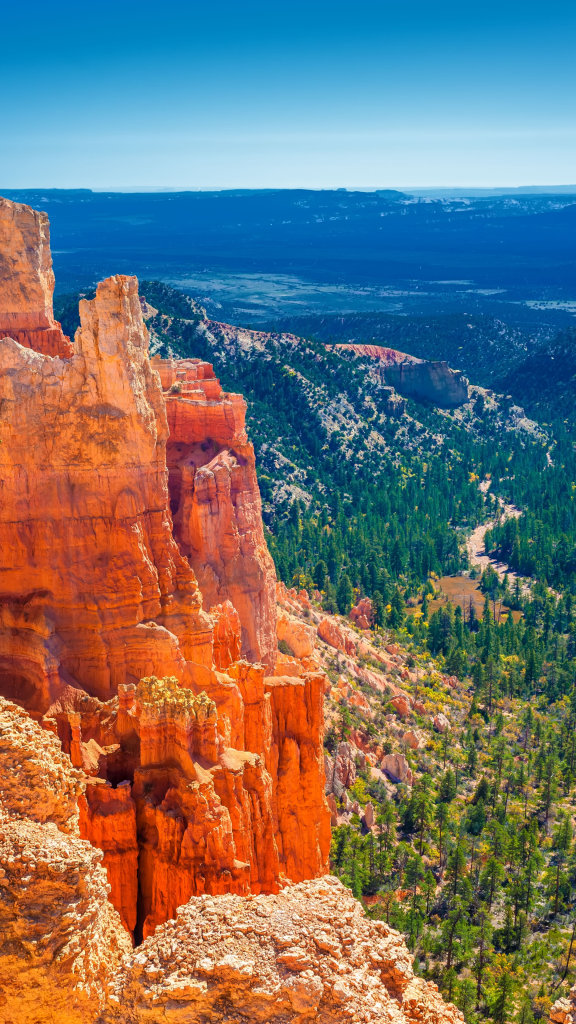
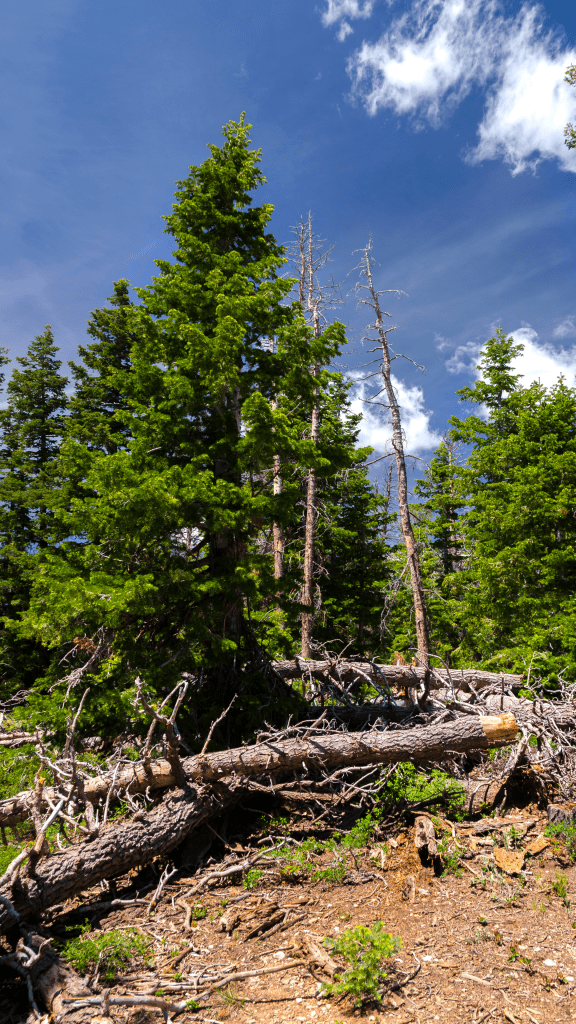

A national park is not a playground. It’s a sanctuary for nature and for humans who will accept nature on nature’s own terms.
Michael Frome
About the Park
Bryce Canyon National Park is small but packs a big punch. From the first moment you catch a glimpse of the fantastic hoodoos and other strange rock formations, you will fall in love with this beautiful park. It seems as if there is an extraordinary view every few steps on each trail. We especially enjoyed the excellent accessibility of the park, from lodging to parking to hiking trails, in a short time.
Live it up!
Best Things to do in the Park
- It all starts with the Rim Trail. The main viewpoints are Sunrise and Sunset Points, but there are hundreds of places along this trail with amazing views of the canyon
- Hike through a slot canyon on the Wall Street Trail
- Go to Bryce Point for a panoramic view of the canyon
- Hike the Queen’s Garden and Navajo Loop Trails. These are probably the most popular trails down in the canyon
- Get up early and see the best sunrise anywhere
- Walk along the 1,800 year old Bristlecone pines on the Bristlecone Loop
Our Visit
Bryce Canyon was one of John’s favorite national parks because his early morning runs on the Rim Trail provided more than enough fantastic views. We also enjoyed our hikes amongst the giant hoodoos. This picture was with one of our new friends we met on the trail.
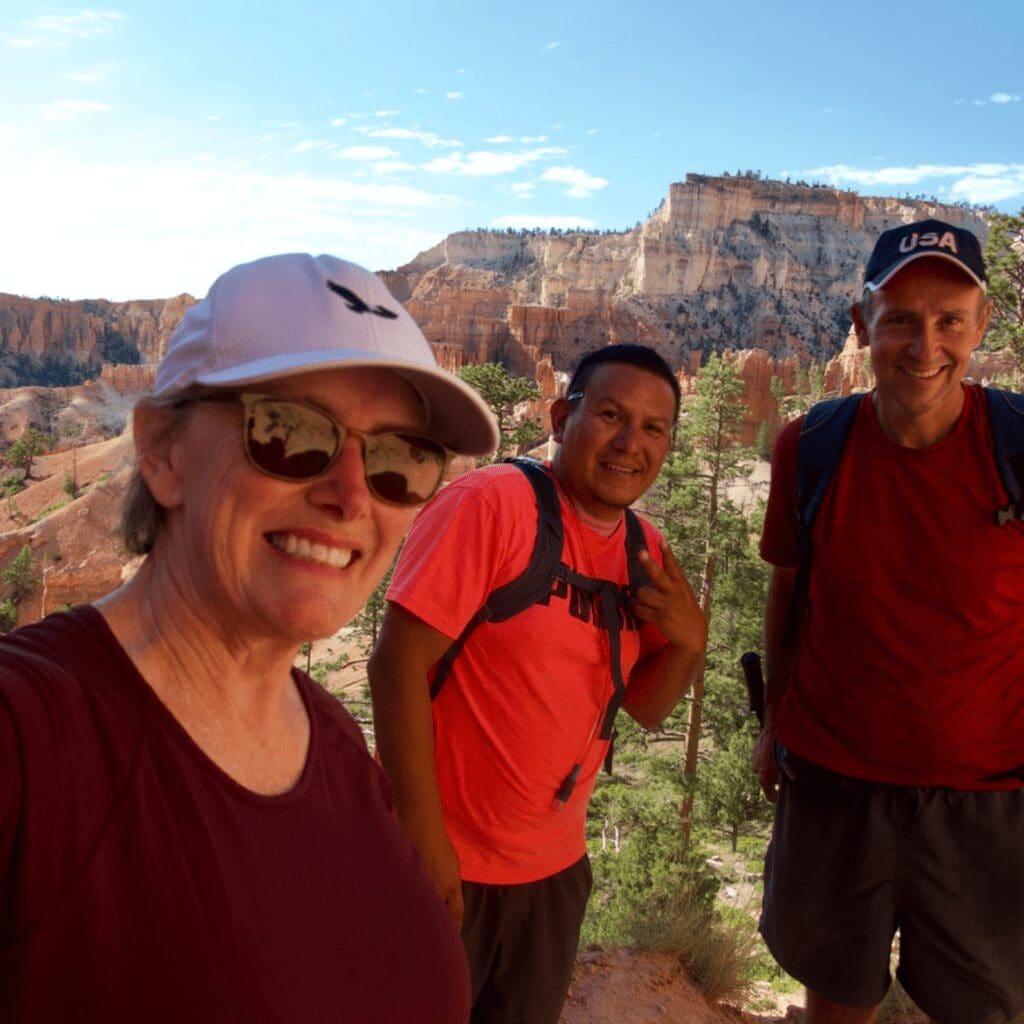
Overview
Year Established
1928
Size of Park
36,000
Annual Visitors
2.1 million
Interesting Fact
There are more ”hoodoos” (tall, thin spires of rock) at Bryce Canyon National Park than any other place in the world.
Best Time to Visit Bryce Canyon NP
We have linked a great website to this button showing the weather for this location by the month. Click below to be taken to Weather-and-Climate.com.
Park Information
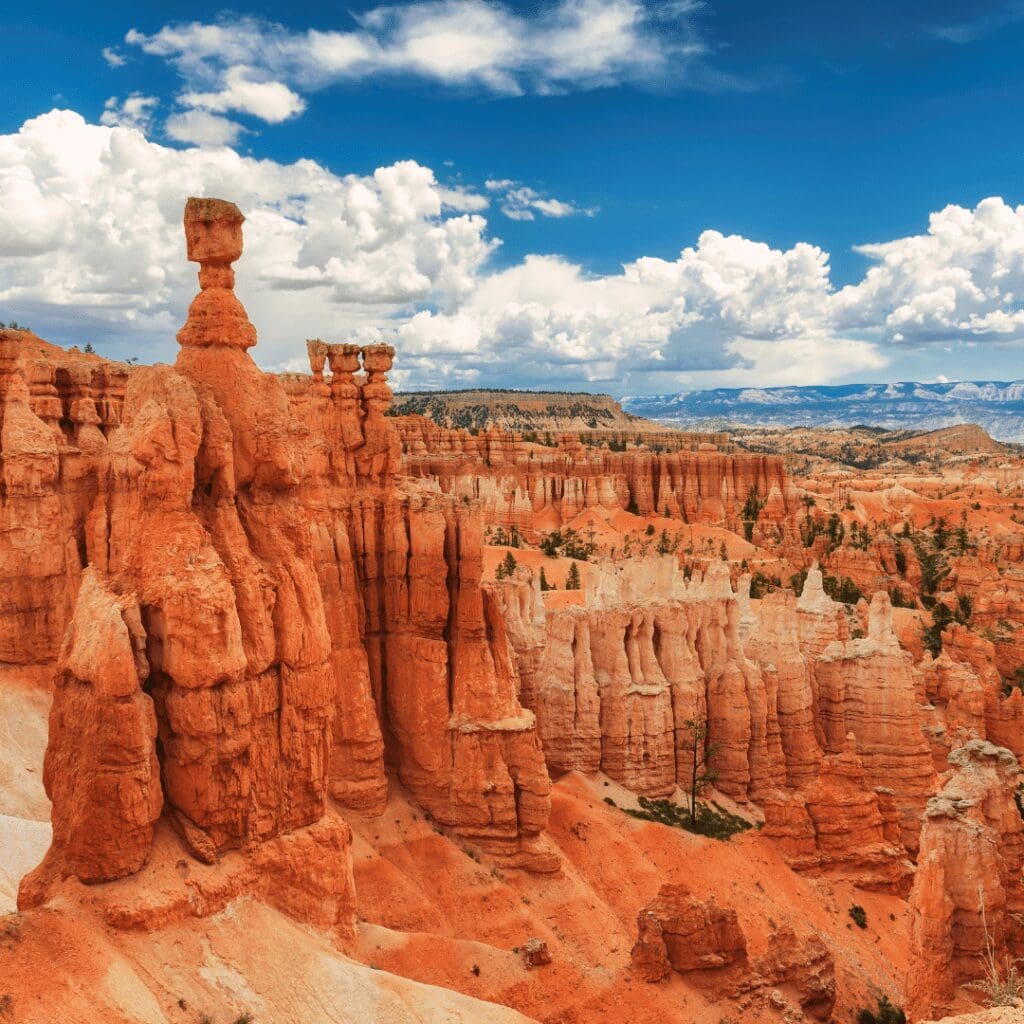
Utah is home to some incredible national parks, and Bryce Canyon National Park is one of them. Bryce Canyon is a reserve in Southern Utah with an elevation of 8,000 feet.
The park is famous for many things, but the most fascinating fact about Bryce Canyon is that it has the world’s largest collection of hoodoos, which are rock formations formed through erosion. The best-known hoodoo in the park is Thor’s Hammer.
Bryce Canyon consists of various overlooks where visitors can enjoy sunset and sunrise. Besides that, the park’s night sky, scenic vistas, and horseshoe-shaped amphitheaters attract thousands of tourists annually. The region’s alpine environment is also home to many birds and mammal species, including endangered species like the California condor and Utah prairie dog.
Most people visit the park in the summer, but the park offers an entirely different experience during the snowy winter. The park’s high elevation makes it an ideal place for winter sports like cross-country skiing and snowshoeing above the rim. They even offer a ranger-led full-moon snowshoe hike. How fun would that be?
Bryce Canyon Best Hikes
Once in Bryce Canyon National Park, you will find plenty of scenic day-hiking trails, most are interconnected. So whether you are an amateur hiker or a beginner, Bryce Canyon has the best hikes that suit everyone’s capabilities and skills! With that said, be aware that hiking down the trails is the easy part; hiking back up is hard!
Queen’s Garden/Navajo Loop Combination Trail
The Queens Navajo Combination Loop is the most famous trail in the Bryce Canyon National Park. This trail is almost 3 miles long and begins near Sunrise Point and ends at Bryce Canyon amphitheater.
With an elevation change of 600 feet, the trail runs through some of the most spectacular sections of the park. The best way to hike this trail begins at Sunset or Sunrise Point. At the bottom of your hike, you will find a hoodoo resembling Queen Victoria! There is a plaque where you can compare the rock to a picture of the queen. We loved this hike!
Fairyland Loop
Hikers choose the Fairyland Loop when looking for an adventure because it is more than 8 miles long and has an elevation change of 1,545 feet. However, all the exhaustion you will experience is worth hiking this trail as it starts at the mesmerizing Fairyland Point and follows the Fairyland Canyon.
The trail is on the south side of Boat Mesa and takes you down to the amphitheater. The trail also passes by the Tower Bridge and China Wall, and you can look closely at these features through a slight detour. At some parts of the trail, it may seem like you are walking through a forest of hoodoos, and you will witness many balancing rocks at eye level.
Mossy Cave Trail
The Mossy Cave Trail offers an easy hike with an elevation change of only 300 feet. This one-mile trail follows the river to a cave. Near its end, the trail splits into two tracks. You can either take the left trail towards the cave or you can follow the right path, which has an overlook providing a breathtaking view of the river and falls. This area has become very popular, and rangers have grown concerned with the damage to nature here, so be careful as you hike.
Rim Trail
The Rim Trail is pretty easy, but its long length makes it hard to categorize its difficulty level. However, you can begin your hike at any point on the trail and make your journey shorter!
John ran this trail every day we were in the park. You can see his joy in our video here. I dropped him off at Bryce Point, and he ran to Fairyland Point and all the way back to the campground. If you hike or run the trail without drop-off, it turns into an 11-mile out-and-back hike from the parking lot. During these 11 miles, you will get spectacular views at Sunset Point, Inspiration Point, and Sunrise Point. John says this was one of the top five runs of his life!
Peekaboo Loop Trail
If you are looking for a much quieter trail than Navajo Trails and Queen’s Garden, you should try the Peekaboo Loop Trail. This trail also takes you to the amphitheater through massive hoodoos. A famous feature of this trail is its Wall of Windows, where the upper portions of the connecting hoodoos frame the blue sky, creating a literal window to the outside world.
With an elevation change of 1500 feet, the trail has a steep descent. For a much more extensive hike, combine the Peekaboo Loop Trail with the Queen’s Garden/Navajo Loop, and you will have a complete tour of the amphitheater and one of the best hikes in the park! It was quite a hike back to the rim!
Camping in the Park
The park has two campgrounds located near the Visitor Center and the main Bryce Amphitheater. North Campground and Sunset Campground require reservation during the summer season, which lasts from May to October. However, during winter, you can book a campsite here on a first-come, first-served basis.
The Sunset Campground is steps away from the Rim Trail, a popular trail for hikes. The campground has a summer dump station and restrooms. In addition, you will also find multiple RV, tent, and walk-in sites, which are fully booked during the peak season. The Sunset Campground also has two ADA Accessible sites for reservation and a group site. Up to 6 guests are allowed per side, and you can also bring in your pets! The campground is closed from November to mid-April.
North Campground has over 100 sites where guests can also bring their pets. There is also a general store near the camping ground, which makes the stay super convenient. It is also close to Sunset Point, so that you can enjoy surreal views every day. There is access to fire pits, restrooms, and picnic tables in the campground.
Camping options near the park
If you cannot find any campgrounds in the park, there are around ten backcountry campsites that allow you to experience the natural wonders comfortably yet economically. These campgrounds offer a variety of sites that can either be reserved in advance or booked on the spot on a first come, first basis.
The Ruby’s Inn RV Park and Campground is located three miles from the park’s entrance and is the next best option if you cannot book a campsite inside the park. This is where we stayed. It offers an excellent camp store and lots of spaces to park an RV.
Another great option is the Bryce Canyon Pines Campground, which provides easy access to a nearby restaurant. Finally, if you want to stay in a campground with a more natural environment, you can try the King Creek Campground in Dixie National Forest.
Best Viewpoints
Bryce Canyon National park is loaded with numerous viewpoints that highlight the park’s best feature; its unique rock formations. Some viewpoints are a must-visit whether you are here for camping or hiking trails!
Yovimpa Point
The Yovimpa Point provides a good look at the famous rock layers in Bryce Canyon. This sequence of rocks has been termed the Grand Staircase, and its various sections have been named for the color of their rocks. On Yovimpa Point, you can stand and have a distant view of all the multicolored rock formations in the park. On the horizon, you can spot the tree-covered hills in the Kaibab Plateau.
Sunrise Point
Sunrise Point is a well-known viewpoint in the park because, from here, you can get a peek at some of the most famous formations in the park. Thor’s Hammer and Silent City can be seen from Sunrise Point, along with the Claron Formation colors. The views become even more heavenly at sunrise as you can see the Sinking Ship and Boat Mesa like any other!
Farview Point
This is another viewpoint where you can see the rock formations along with the North Rim of the Grand Canyon. Some major points visible from the Farview Point include the Kaiparowits Plateau, the Aquarius Plateau, and Molly’s Nipple. The sight of hoodoos, caps, and fins from this point is truly amazing.
Bryce Point
Bryce Point offers the perfect spot to have a clear view of the amphitheater. Visitors at this juncture get immersed in the park’s natural history which is depicted through the geologic features visible from this elevation. The entire park’s rock formations and grottos are a testament to the park’s ancient history, where time and natural forces have created this landscape.
Bristlecone Pine Trail offers an easy hike with beautiful views of the park. There were big wooden benches where we sat and talked about life while we looked at this beautiful park. We loved Bryce and would go back any day of the week!
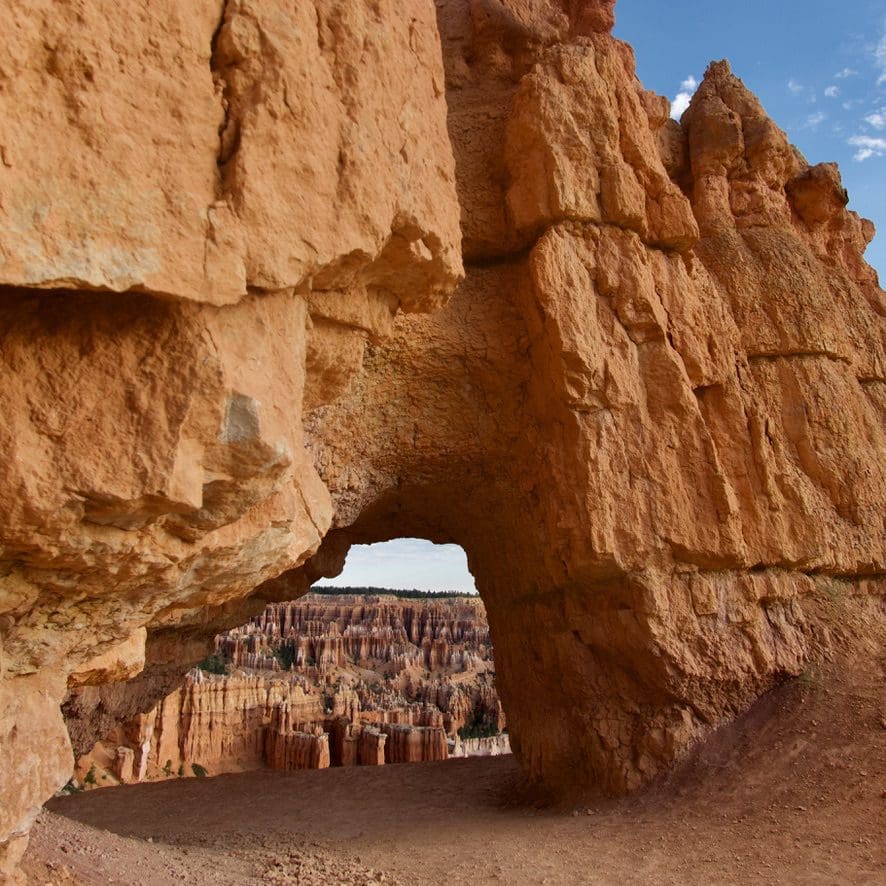
State Information
Click on the button to explore the state and travel guides for the area.
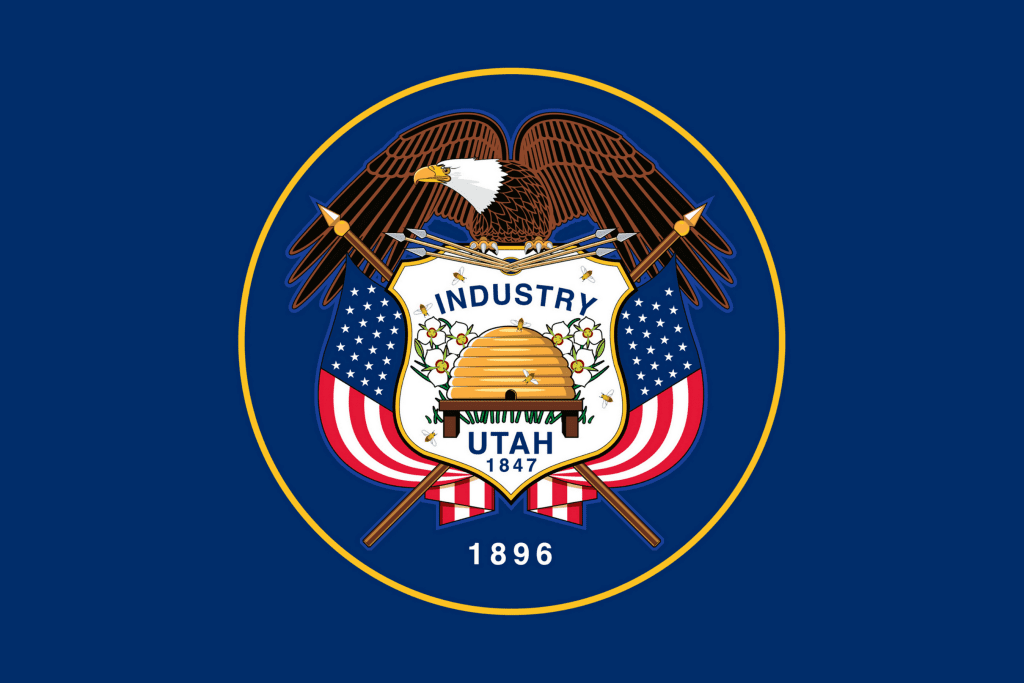
Getting to the Park
The closest major airports are Salt Lake City International and McCarran International Airport in Las Vegas, Nevada. Both Airports are 270 miles or a 4.5 hour drive from the park. It also makes sense to combine your Bryce Canyon visit with a trip to one of the other four National Parks in Utah.
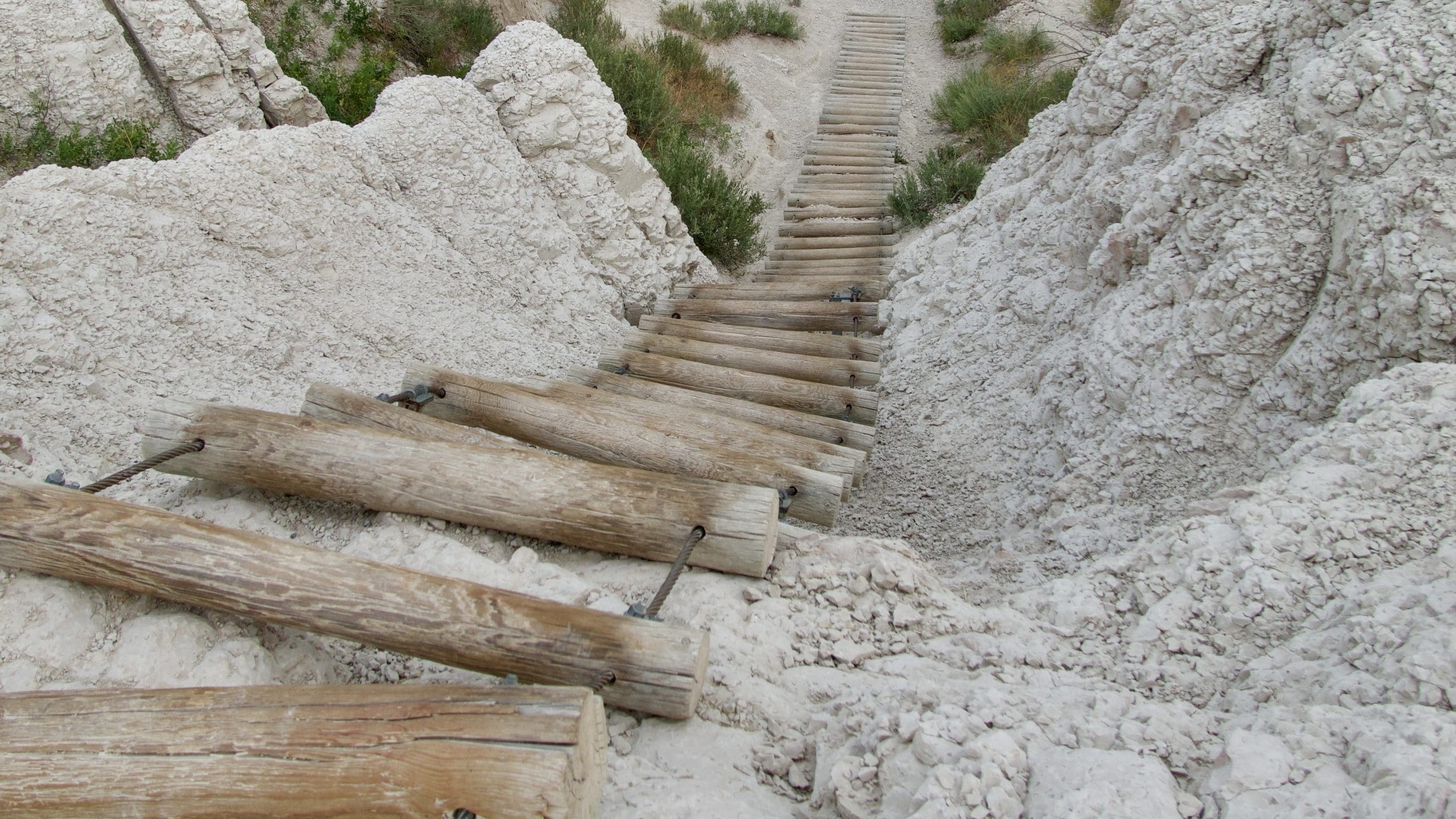
Explore another National Park in the USA
We’ve visited 51 of the 63 parks. Check out our other guides.
